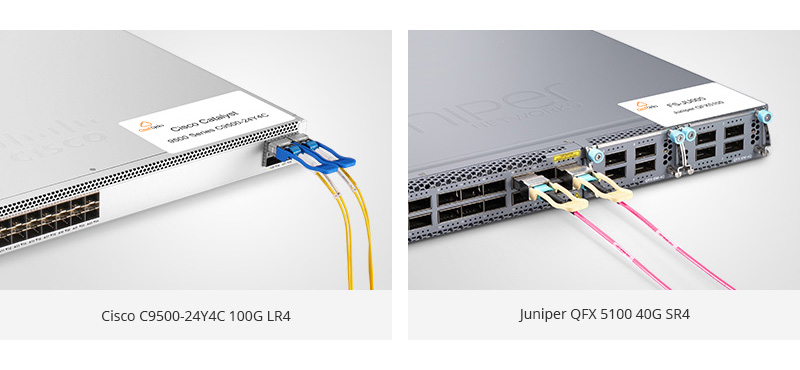Date:2019-12-26 Author:

Cloudoptics Standard Transceiver Modules
Cloudoptics standard compatible modules can run well on the devices that have no strict compatibility requirements. For example, network switches from F5 support the standard transceivers. These brands don't implement the vendor lock-in policy or encrypt their devices.
Cloudoptics Coding Board Offers A One-Size-Fits-All Transceiver Module Solution
Cloudoptics coding board is designed to solve real-time compatibility needs and upgrade the transceiver firmware in the data center. This product offers three interfaces for SFP/SFP+, XFP, and QSFP+/QSFP28 modules as well as DAC/AOC cables. Users are accessible to module configurations of more than 200 brands like Cisco, Juniper, Arista and other customized reprogramming services. The coding can be done on the instant online platform fsbox.com with an intuitive web-based interface. With Cloudoptics coding board, customers can enjoy the functions like batch coding, diagnosing coding and so on.
FAQs
Is there any difference between third-party and original modules?
There is no big difference between OEM and third-party transceivers. Because all transceiver modules are produced based on the MSA (multi-source agreement). The only difference is that the vendor ID in the EEPROM is reset to the system that the vendor owns. This means the connected modules must have the corresponding EEPROM codes that can work with the OEM vendors' devices. Cloudoptics uses the same software codes as the original vendors to ensure the Cloudoptics transceivers are compatible with original brand devices.
Transceiver Compatibility Issues Troubleshoot
When facing any transceiver compatibility with a brand device, you may check:
1)Check whether the transceiver is in the right device port. Some transceivers share the same size, such as SFP and SFP+ modules. The SFP module can fit seamlessly into an SFP+ port, and vice versa. However, the connection may suffer from a reduced transmission rate or even can not work. The transmission speed will be locked at 1Gbps when one SFP module is plugged into an SFP+ port. This connection may deliver no results, because some 10G switch ports can not deal with 1Gbps automatically, but require manual setup to deliver 1Gbps.
2)Use the correct fiber cables. Transceiver modules on each end should use the same fiber cable types at each end. For example, if there are two Cisco compatible 40G QSFP+ LR4 modules on each side for a long-distance link (about 5km), single-mode fibers are mostly used. Multi-mode fibers are usually deployed with short-distance modules like QSFP+ SR4 to complete a short link (about 100m - 500m). Therefore, ensure the optical transceivers on each end use the correct fiber type.
 Copyright © 2019 cloudoptics. All Rights Reserved - Privacy Policy
Copyright © 2019 cloudoptics. All Rights Reserved - Privacy PolicyEmail: sales@cloudoptics.net